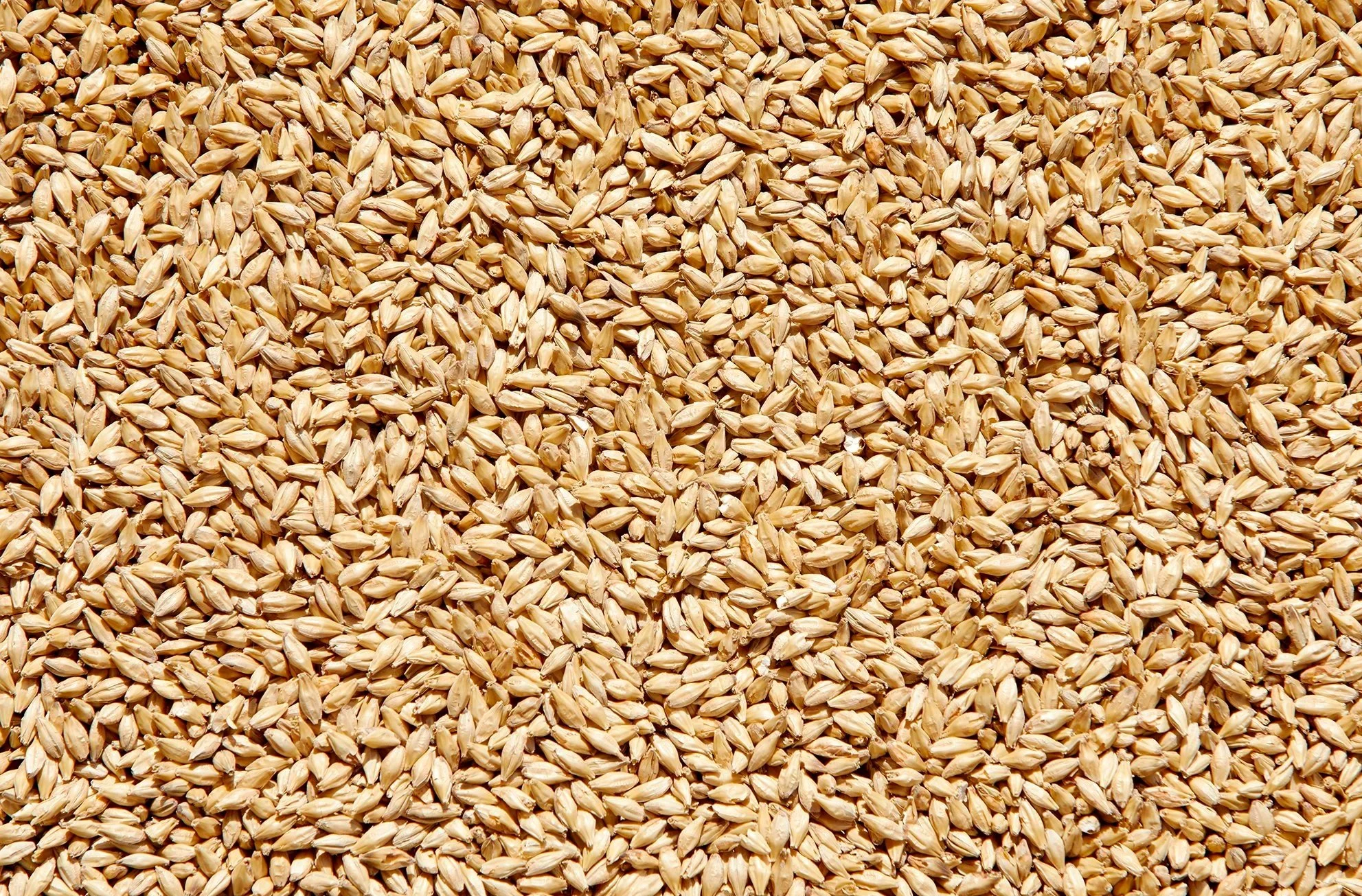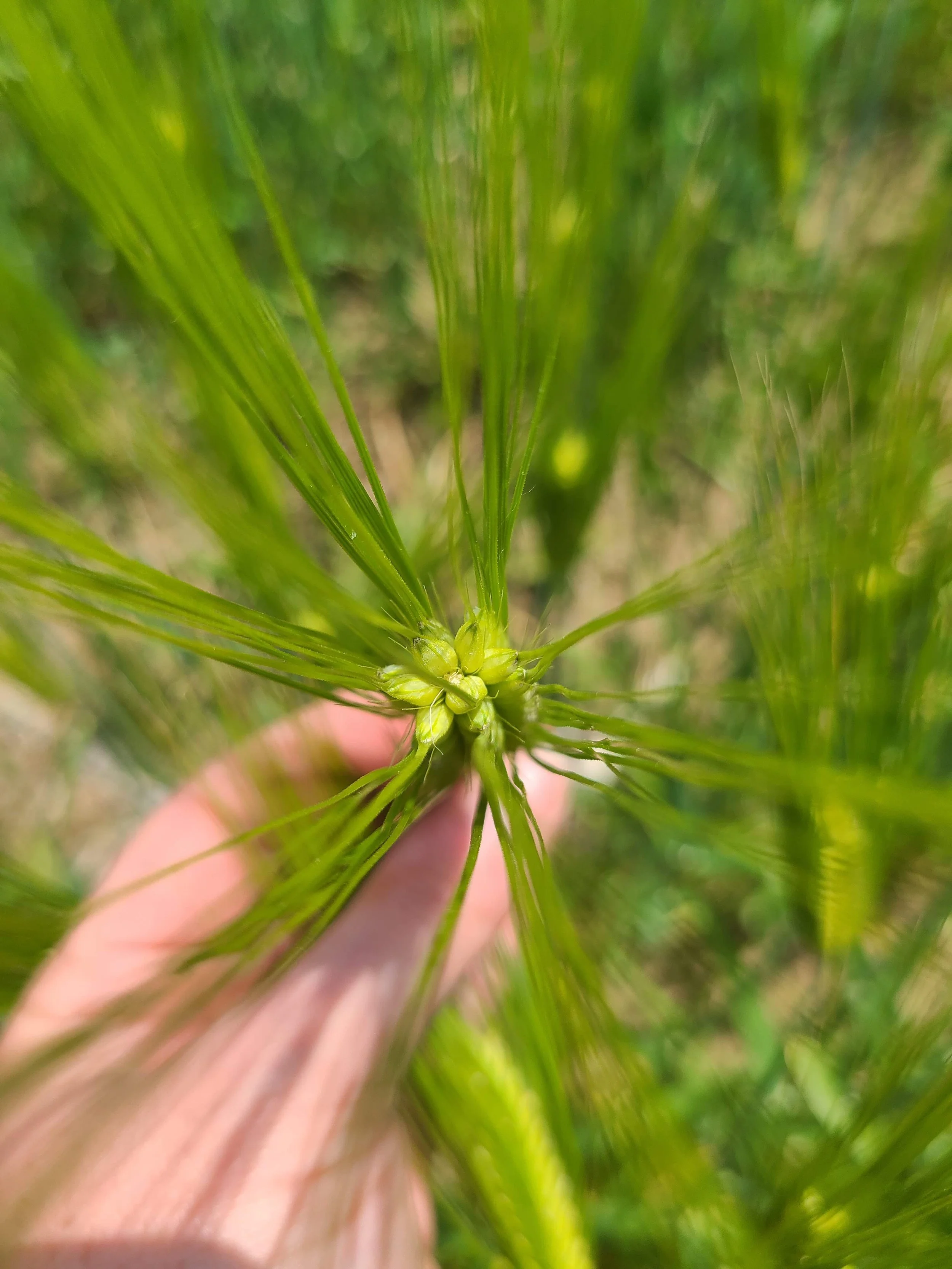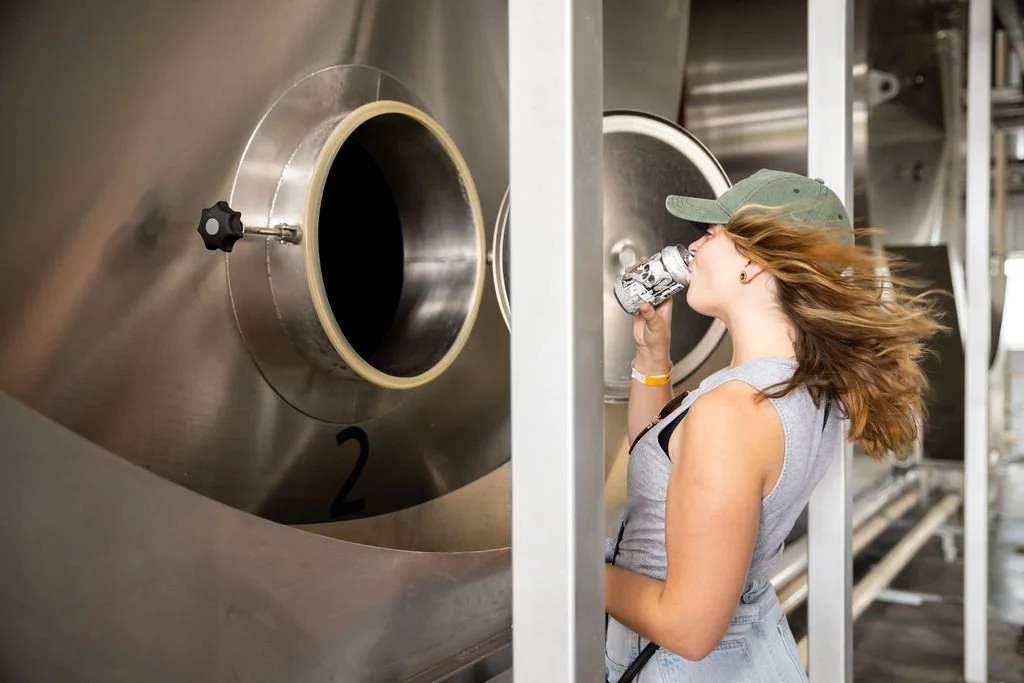Pilsner malt.
The clean, crisp, golden backbone of beer. Most brewers know it, love it, and order it without much debate. But here’s a hot take: if you’re only thinking about COA specs (protein, color, extract) you’re missing out on an entire dimension of creative brewing.
That’s because not all pilsner malt is the same. And we’re not talking about “German vs. American” or “floor-malted vs. pneumatic.” We’re talking about barley variety.
At Root Shoot Malting, we grow and malt six different barley varieties, each with its own unique personality. That’s not an accident, it’s a deliberate choice tied to how we farm.
We’re a fifth-generation family farm, and our barley fields aren’t just a means to an end. They’re part of the regenerative system that keeps our soil healthy, increases biodiversity, and reduces inputs. Rotating different barley varieties into our crop plan improves soil resilience, spreads risk across changing climate conditions, and lets us see firsthand how each variety performs in Colorado’s environment (hint: they all grow well).
And because we malt each variety separately, brewers get something most large maltsters can’t offer: a chance to taste those differences, not just read them off a COA. Big maltsters often blend varieties to meet a spec - consistent, yes, but it erases the subtle flavor contributions of each grain. We think those subtleties are worth keeping.
Think of it like hops: Citra and Saaz both make great beer, but you wouldn’t swap them without expecting a flavor shift. Same with barley. Variety matters.
Genie Pilsner
The crowd-pleaser. Genie is your all-around workhorse that plays nice in just about any style. It’s clean but with a rounded sweetness that makes malt-forward lagers like Helles really shine. It’s also a sneaky-good base for hazy IPAs: low color, smooth mouthfeel, and just enough malt backbone to keep those hops in check.
Mike’s Thoughts: “If I had to pick one malt to be stuck on a deserted island with, it’s Genie. Mostly because it’s friendly and knows how to party.”
Adam’s Thotz: “Genie’s the buddy who shows up with snacks, a good playlist, and somehow knows how to fix your Wi-Fi.”
Odyssey Pilsner
The minimalist. Odyssey is here for brewers who want their hops or fermentation profile to take center stage. Low color, subtle flavor, and high efficiency make it perfect for hop-forward beers (modern West Coast IPA, anyone?) or squeaky-clean lagers. It’s the malt equivalent of a well-tailored black T-shirt…simple, timeless, goes with everything.
Mike’s Thoughts: “If Genie is the life of the party, Odyssey is the one cleaning up after. Polished. Reliable. Doesn’t spill beer on your rug.”
Adam’s Thotz: “Like the quiet person at the bar who doesn’t say much, but when they do, it’s brilliant and everyone shuts up to listen.”
Lightning Pilsner
The rustic romantic. Lightning has a grainy, cozy, almost hay-like note that works beautifully in Czech lagers or farmhouse styles like Saisons. Early batches leaned into a green, fresh-cut character, but the most recent crop is a bit cleaner while still holding onto that rustic charm. Perfect when you want a malt with a story to tell.
Mike’s Thoughts: “You know that smell when you walk into a barn and somehow it’s comforting? That’s Lightning.”
Adam’s Thotz: “Lightning’s that old truck that still runs like a dream and smells faintly of fresh hay.”
Buck Pilsner
The wildcard. Buck is a 6-row hulless barley, which means high extract potential and lighter color than you’d expect. Flavor-wise, it’s pretty mild (just a whisper of nuttiness) so it’s not here to dominate. But in the right place? Game changer. Think high-ABV beers where you want to boost gravity without adding color, or barrel-aged projects where you want residual body after years in oak. (Pro tip: probably keep it under 30% of the grist unless you really like lautering challenges.)
Mike’s Thoughts: “Buck’s like that one quiet friend who secretly crushes trivia night every time. You just have to put them in the right situation.”
Adam’s Thotz: “Looks unassuming, then sneaks up and wins MVP without even trying.”
Thunder Pilsner
The fan favorite. We first malted Thunder last year and the beers that came out of it were gorgeous…clean, bright, and balanced. It’s the kind of malt that lets you brew a Pilsner so crisp you’ll swear you hear thunder crackle when you pour it. We’re beyond excited to bring it back.
Mike’s Thoughts: “Thunder is just… satisfying. The kind of malt that makes you want to high-five someone.”
Adam’s Thotz: “Big flavor, smooth ride. Like a muscle car that’s somehow quiet.”
Magic Pilsner
The winter barley newcomer with big potential. Fresh out of the field and right into the kiln, Magic boasts high extract, low beta, and a flavor profile we can’t wait to taste in a pint. If it performs as well in the glass as it does on paper, this one’s going to live up to its name.
Mike’s Thoughts: “Feels like the start of something great. Like a first date where you don’t spill food on yourself.”
Adam’s Thotz: “Charming, confident, and maybe a little dangerous. You can’t help but want to see what happens next.”
Why This Matters for Brewers…
Hops and yeast get all the credit for flavor creativity in beer, but malt is half the equation. Understanding barley variety opens up another layer of control. Want a malt that disappears into the background so your Nelson Sauvin hops can strut? Odyssey’s your friend. Want to lean into a soft, rustic malt profile for a mixed-culture saison? Lightning’s calling.
We didn’t just wake up one day and say, “Let’s malt something.” This new pilsner program is part of our long game: keeping our fifth-generation farm thriving for another 100 years. For us, variety isn’t just about brewing options, it’s about soil health, climate resilience, and building a sustainable farm for the next generation. By rotating and trialing different barley varieties, we can grow healthier crops, adapt to shifting weather patterns, and give brewers a richer palette to work from. That’s intentional beer from the ground up.
Pilsner Pairing Guide: Which One Should You Brew With?
Six varieties. Six different ways to build the backbone of your beer. Which one’s going in your next brew?











